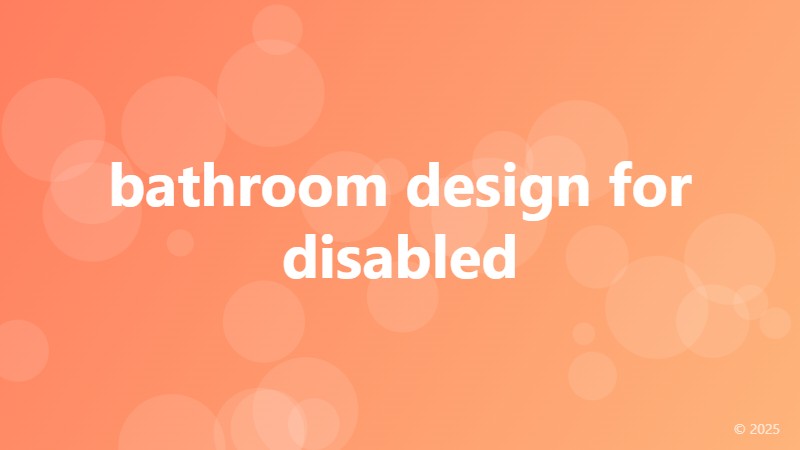bathroom design for disabled

Creating a Bathroom Oasis for People with Disabilities
Designing a bathroom for individuals with disabilities requires careful consideration of their specific needs and limitations. A well-planned bathroom can greatly enhance the quality of life for people with disabilities, providing them with independence, comfort, and safety. In this article, we'll explore the essential elements of a bathroom design for disabled individuals, highlighting the importance of accessibility, functionality, and aesthetics.
Accessibility: The Foundation of a Disability-Friendly Bathroom
A bathroom designed for people with disabilities must prioritize accessibility above all else. This includes ensuring that the space is wheelchair accessible, with a wide enough doorway and clearance around the toilet, sink, and shower. A roll-in shower with a low threshold or no threshold at all is also crucial, allowing wheelchair users to easily enter and exit the shower area.
In addition to wheelchair accessibility, grab bars, non-slip flooring, and lever-handled faucets are essential features that promote independence and reduce the risk of accidents. A bathroom with adequate lighting, clear floor space, and minimal obstacles also enables individuals with disabilities to navigate the space with confidence.
Functional Features for Enhanced Comfort and Safety
Beyond accessibility, a bathroom design for disabled individuals should incorporate functional features that promote comfort and safety. For instance, a toilet with a higher seat or a comfort-height toilet can make it easier for individuals with mobility impairments to use the bathroom. A sink with knee space or a wall-mounted sink can also provide more clearance and comfort for wheelchair users.
In addition, a bathroom with a shower bench or a fold-down seat can provide a safe and comfortable place for individuals to sit while showering. A handheld showerhead with a long hose can also be beneficial, allowing users to shower while seated or standing.
Aesthetics: Creating a Bathroom Oasis
While functionality and accessibility are crucial, a bathroom design for disabled individuals should not neglect aesthetics. A well-designed bathroom can be a calming oasis, providing a sense of serenity and relaxation. By incorporating elements such as natural light, soothing colors, and decorative fixtures, a bathroom can become a haven for individuals with disabilities.
Incorporating plants, artwork, or other decorative elements can also create a sense of warmth and personality in the bathroom. Furthermore, a bathroom with a spa-like ambiance can promote a sense of luxury and indulgence, helping individuals with disabilities feel pampered and cared for.
Conclusion
Designing a bathroom for individuals with disabilities requires careful consideration of their unique needs and limitations. By prioritizing accessibility, functionality, and aesthetics, a bathroom can become a safe, comfortable, and empowering space that enhances the quality of life for people with disabilities. Whether you're designing a bathroom for yourself or a loved one, remember that a well-planned bathroom can make all the difference.